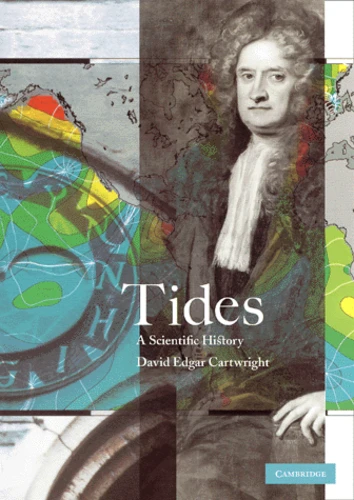Tides. A Scientific History
Par :Formats :
- Paiement en ligne :
- Livraison à domicile ou en point Mondial Relay indisponible
- Retrait Click and Collect en magasin gratuit
- Nombre de pages292
- PrésentationBroché
- Poids0.59 kg
- Dimensions17,5 cm × 25,0 cm × 1,2 cm
- ISBN0-521-79746-2
- EAN9780521797467
- Date de parution01/02/2001
- ÉditeurCambridge University Press
Résumé
Throughout history, the prediction of earth's tidal cycles has been extremely important. This book provides a history of the study of the tides over two millennia, from the primitive ideas of the Ancient Greeks to the present sophisticated geophysical techniques that require advanced computer and space technology. Tidal physics bas puzzled some of the world's greatest philosophers, scientists and mathematicians: amongst many others, Galileo, Descartes, Bacon, Kepler, Newton, Bernoulli, Euler, Laplace, Young, Whewell, Airy, Kelvin, G. Darwin, H. Lamb, have all contributed to our understanding of tides. The problem of predicting the astronomical tides of the oceans has now been, in essence, completely solved, and so it is a perfect time to reflect on how it was all done from the first vague ideas to the final results. The volume traces the development of the theory, observation and prediction of the tides, and is amply illustrated with diagrams from historical scientific papers, photographs of artifacts, and portraits of some of the subject's leading protagonists. The history of the tides is in part the history of a broad area of science, and the subject provides insight into the progress of science as a whole: this book will therefore appeal to all those interested in how scientific ideas develop. It will particularly interest those specialists in oceanography, hydrography, geophysics, geodesy, astronomy and navigation whose subjects involve tides.
Throughout history, the prediction of earth's tidal cycles has been extremely important. This book provides a history of the study of the tides over two millennia, from the primitive ideas of the Ancient Greeks to the present sophisticated geophysical techniques that require advanced computer and space technology. Tidal physics bas puzzled some of the world's greatest philosophers, scientists and mathematicians: amongst many others, Galileo, Descartes, Bacon, Kepler, Newton, Bernoulli, Euler, Laplace, Young, Whewell, Airy, Kelvin, G. Darwin, H. Lamb, have all contributed to our understanding of tides. The problem of predicting the astronomical tides of the oceans has now been, in essence, completely solved, and so it is a perfect time to reflect on how it was all done from the first vague ideas to the final results. The volume traces the development of the theory, observation and prediction of the tides, and is amply illustrated with diagrams from historical scientific papers, photographs of artifacts, and portraits of some of the subject's leading protagonists. The history of the tides is in part the history of a broad area of science, and the subject provides insight into the progress of science as a whole: this book will therefore appeal to all those interested in how scientific ideas develop. It will particularly interest those specialists in oceanography, hydrography, geophysics, geodesy, astronomy and navigation whose subjects involve tides.

